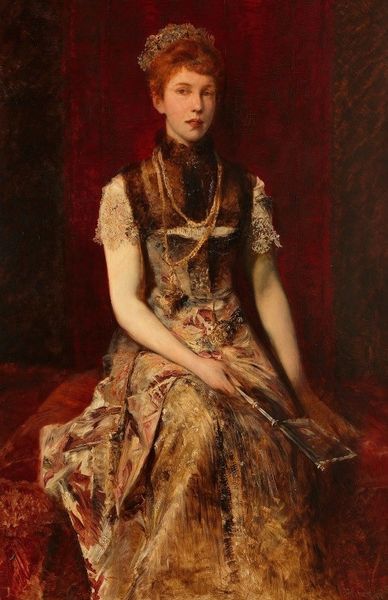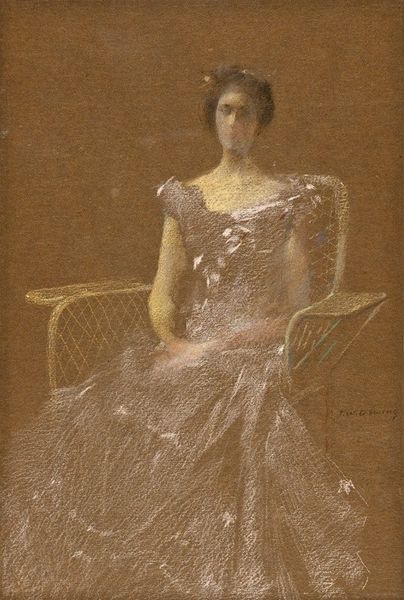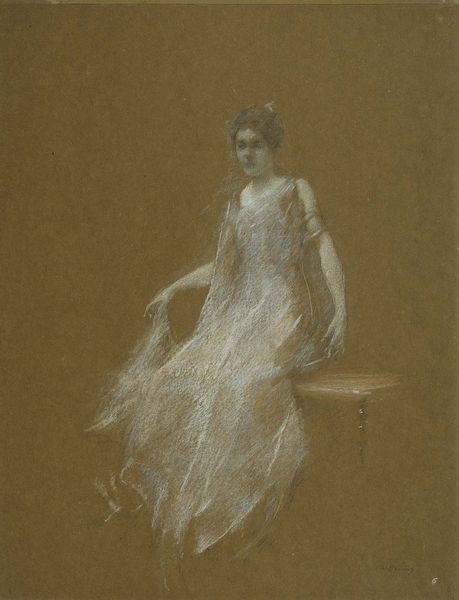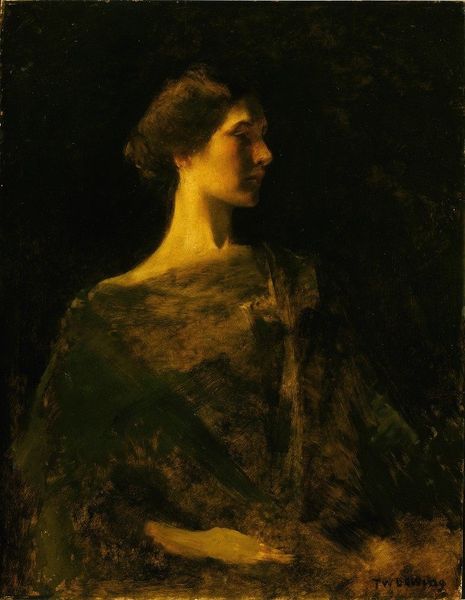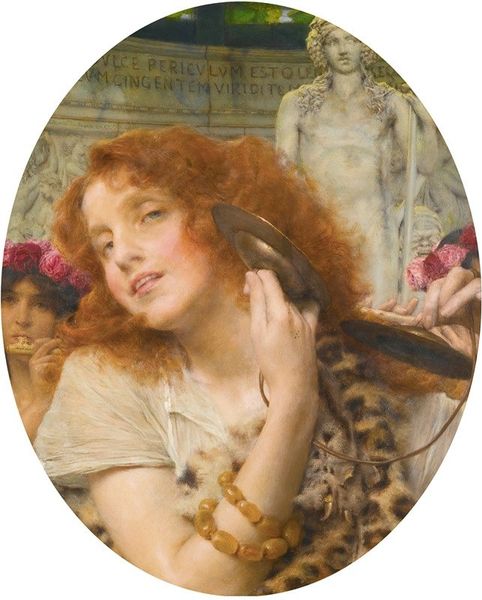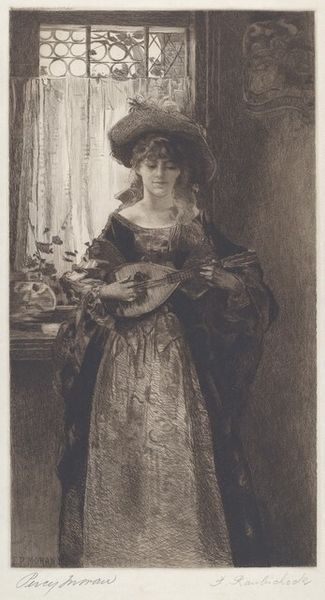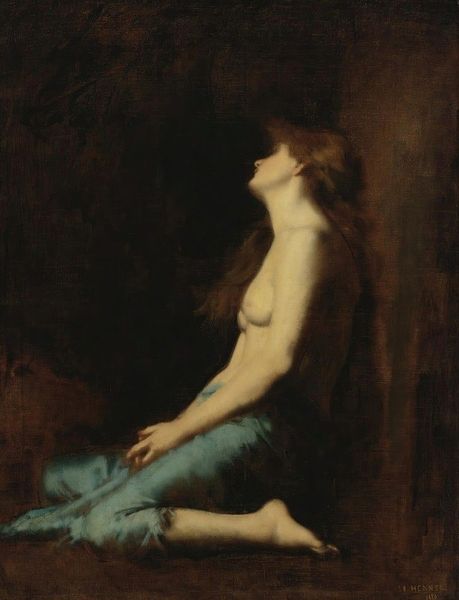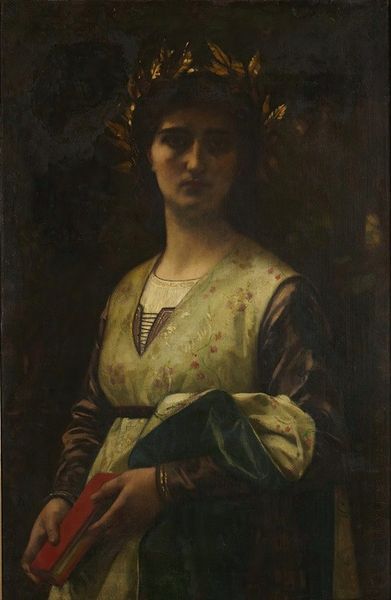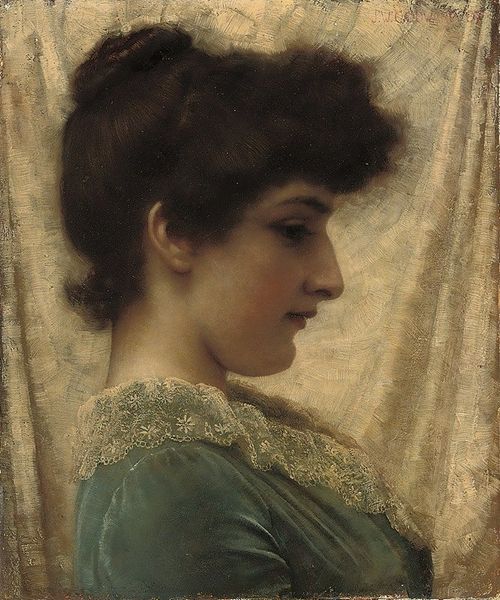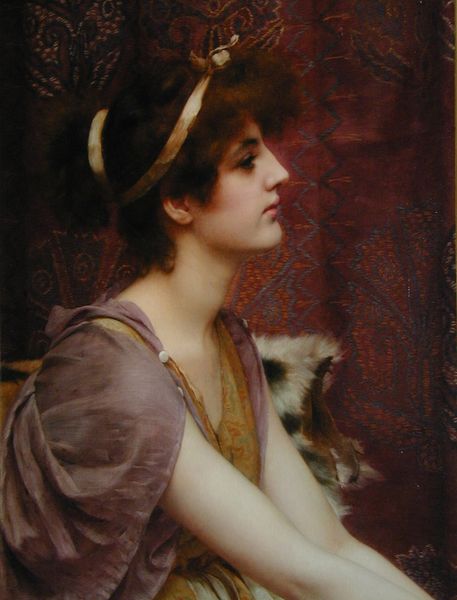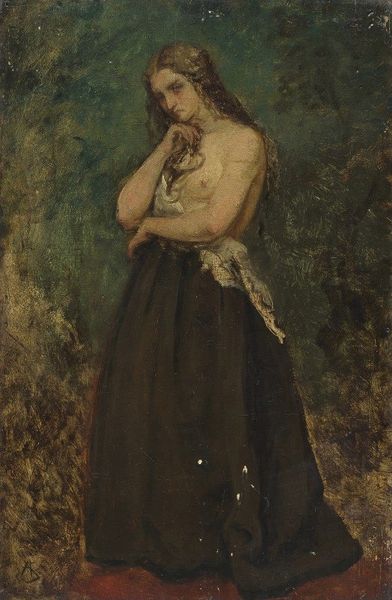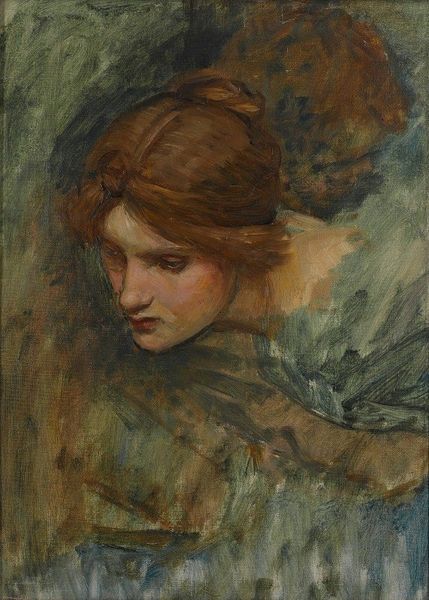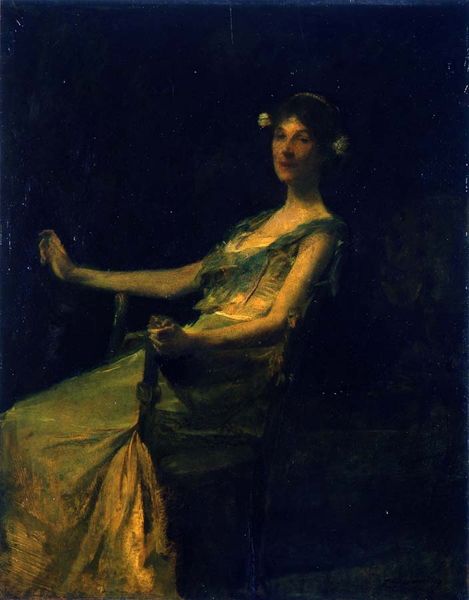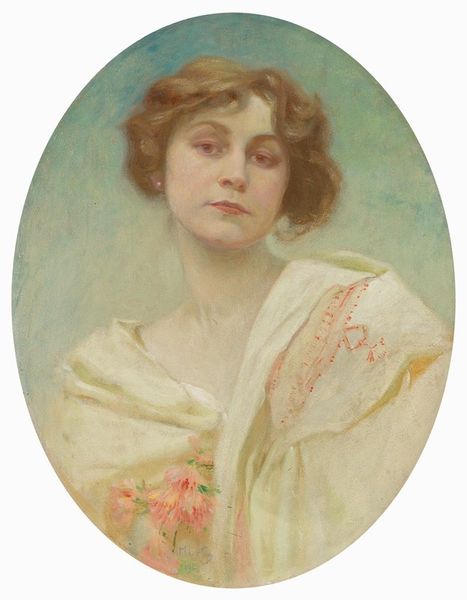
Copyright: Public Domain: Artvee
Curator: Here we have John White Alexander's "Mrs. Thomas Hastings," painted circa 1901. It's an oil-on-canvas portrait, very much in the Impressionistic style. Editor: Immediately, the overall golden hue gives me a sense of faded glamour, a wistful nostalgia. It’s soft, almost dreamy, with Mrs. Hastings seeming lost in thought. Curator: The portrait tells us a lot about the sitter's social status. A commission like this would have been expensive, indicative of a wealthy background. Also, consider Alexander's positioning as a leading portrait painter within the American art world during the turn of the century. He captured the elite. Editor: Right, there's an undeniable elegance in the pearl necklace, the delicate dress. But looking closer, I’m wondering about the subtle vulnerability in her gaze. The wispy brushstrokes almost obscure her features, blurring any clear expression of strength. Was this fragility a projected ideal of women at the time? Curator: Precisely! This aestheticized vulnerability ties into the socio-political expectations placed on women in Edwardian society. These portraits were performative acts, shaping how women wanted to be seen and remembered. The sitter's posture, her fashionable dress all conform to standards that enforced particular ideas. Editor: And what do you make of the composition? There is that almost ghost-like figure to her right, a strange ornamentation with fabric or wings. Its hazy quality, almost fading into the backdrop. Could it speak to women’s identities, something not solid or clearly formed? Curator: Very astute! Alexander often employed such atmospheric techniques. He trained in Munich and incorporated techniques from the Aesthetic Movement, where vagueness of outline and a subdued palette suggested refinement. The ghostly element likely a fashionable decorative statue speaks also of material culture. Wealthy women were surrounded by objects denoting cultural capital. Editor: Seeing it that way, there's this almost palpable tension, the tension between the expectations and aspirations women were facing during this transformational moment in the turn of the century. On one hand the aesthetic ideals, and on the other what was bubbling underneath the surface. Curator: Exactly. Alexander's portrait presents us not with simply a likeness, but a complex reading of societal pressures and identity at the beginning of the 20th Century. Editor: It prompts questions about what was repressed, left unspoken behind gilded frames. Curator: Indeed.
Comments
No comments
Be the first to comment and join the conversation on the ultimate creative platform.
